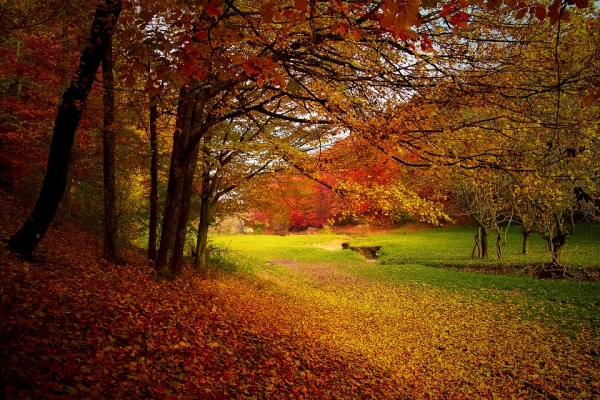With the first day of autumn beginning September 22nd, now is the best time to implement some “green” ideas that will save both energy and money. Below is a compiled list of tips that will help you prepare for the transition to lower temperatures and more time spent indoors.
Heating and Furnace
1. For every degree you lower your thermostat, you save about 2 percent on your heating bill.
2. For optimal home heating and energy saving, set your thermostat no higher than 68 degrees while at home, and lower the heat when you go to bed or when you are not at home.
3. Adding a humidifier to your home can help you keep your thermostat at lower temperatures while still ensuring optimal comfort.
4. Don’t crank up the heat! The house will warm up at the same rate, regardless of the temperature setting; your home won’t heat up any faster by raising the temperature!
5. If you have a ceiling fan, change the direction of airflow. During the colder months, the blades should be positioned in the clockwise position, which will help push warm air from the ceiling down to the floor (and redistribute the heat).
6. Changing dirty furnace air filters can provide a cost savings of up to 5 percent!
7. Do you have a fireplace? Now is a good time to check vent systems and clean chimneys.
8. Check doors for weather stripping and replace if necessary.
9. Wrap an insulating blanket around your water heater.
10. If you want the most accurate readings on your thermostat, you might want to consider installing a programmable thermostat.
Windows and Insulation
11. During sunny days, leave blinds and drapes open to allow solar heat to warm your home. Keep them open during the day to let heat in, and then close them at night to prevent heat from escaping.
12. You might want to consider upgrading to high- efficiency windows with low e-coatings, insulated spacers, and argon gas fill.
13. Remove window air conditioners for the fall. If the air conditioners cannot be removed, make sure to seal them with tape or caulking, and cover them with an airtight, insulated jacket.
14. Check to see if your insulation is up to par. You can find out by measuring its thickness; if there is less than R-22 (7 inches of rock wool or fiberglass, or 6 inches of cellulose), consider adding more.
15. Install covers on keyholes and/or letterboxes to reduce indoor drafts.
Lighting
16. Replace light bulbs. Switching to CFLs or LED bulbs can provide greater cost -savings, as they use less energy and last longer than traditional incandescent bulbs.
17. Install motion sensors or timers on external lights.
18. Turn off lights when they are not being used.
19. Halogen lighting is ideal for gardens and pathways, as they use up to 40 percent less energy than traditional bulbs.
20. Use automatic control switches to adjust lighting to appropriate levels.
General
21. Check the air pressure in your tires. Cooler temperatures can lower tire pressure, which, in turn, lowers fuel efficiency.
22. Chop up leaves with your lawn mower to create a layer of mulch that will break down and give your lawn nutrients.
23. Keep your fridge at least three quarters full to maximize efficiency.
24. Wash laundry with full loads, and use cold water to save energy.
25. When cooking on the stove, make sure to put lids on pots to cook food quicker and save energy.

